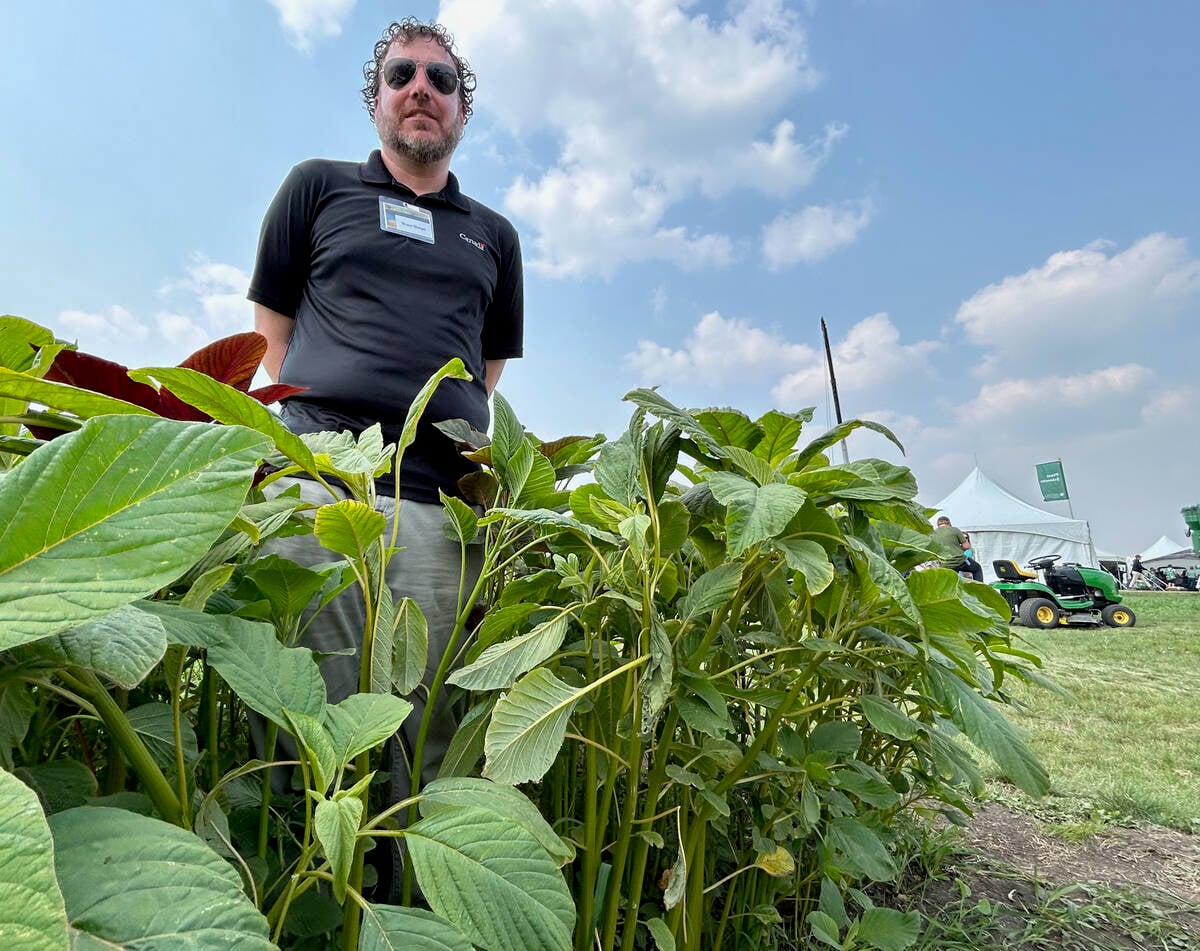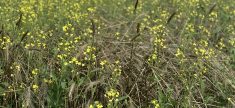Producers looking to reseed drought-thrashed forage stands might want to check results from a recent University of Saskatchewan study that compared the performance of forage and annual blends under a planned grazing system.
The study’s co-author Jourdyn Sammons presented its results during a rotational grazing lunch-and-learn hosted by the Canadian Forage and Grassland Association at Ag in Motion last July.
Researchers measured the performance of four different blends, grazed by yearling steers in 14-acre paddocks over two years at the Livestock and Forage Centre of Excellence near Clavet, just southeast of Saskatoon.
Read Also

Glufosinate-resistant waterhemp appears in U.S. Midwest
News of glufosinate-resistant kochia in the U.S. is concerning as farmers are losing options to control waterhemp, also of the pigweed family.
One annual blend included forage brassica, forage peas and barley, while the other included fall rye and clover. Two perennial blends were also tested, including a hybrid bromegrass and alfalfa blend, and a mix of sainfoin and meadow bromegrass.
Researchers measured the enteric methane emitted by steers on the various blends. The study also looked into soil health metrics, although those results are still being analyzed.
The study highlighted different potential advantages across the blends.
The hybrid bromegrass and alfalfa treatment consistently produced high biomass and provided adequate nutrition. Steers gained well on it, making it profitable — as long as a producer has time to establish perennial stands.
For producers needing a quicker turnaround, a barley, pea and brassica mix also grew plenty of biomass, topping production from the sainfoin and meadow bromegrass blend.
Sammons expected the sainfoin and meadow bromegrass to produce the least methane, due to chemical compounds in the sainfoin. However, the barley, pea and brassica blend beat it, coming in with the lowest emissions in the study.
Steers grazing the fall rye and clover blend had the best average daily gains, but the “yield wasn’t adequate to provide enough forage for a producer,” Sammons said in an interview.
“I wouldn’t say it would be a profitable investment, even though it did produce the high-quality forage for a period of time.”
Those results could be due to how they handled fall rye. Although fall rye is typically seeded in the fall, overwintered and grazed in the second year of growth, U of S researchers seeded their fall rye in spring. It was grazed while still immature, so it didn’t yield as well as hoped.
“The steers did really well on it, but they were only on there for a short amount of time.”
The annual blends also had more shallow moisture, which Sammons says they weren’t expecting.
“Typically, you would expect that your perennials would have more moisture continuously, but I think the biggest difference is that because the perennials are growing all year long — although they’re dormant in the winter — there’s more continued growth.”
Annuals, on the other hand, are seeded mid-spring, grazed and then quite likely “toast” right after grazing, she says.
“I think because of that and the continuous pull of the perennials, that’s why we’re seeing the increased levels of moisture in the shallow levels of the soil.
“But the flip side of that is because of the deeper rooting systems, because of the more complex tap roots that our perennials may possess there, they are able to utilize that moisture and they are able to access the moisture.”
















